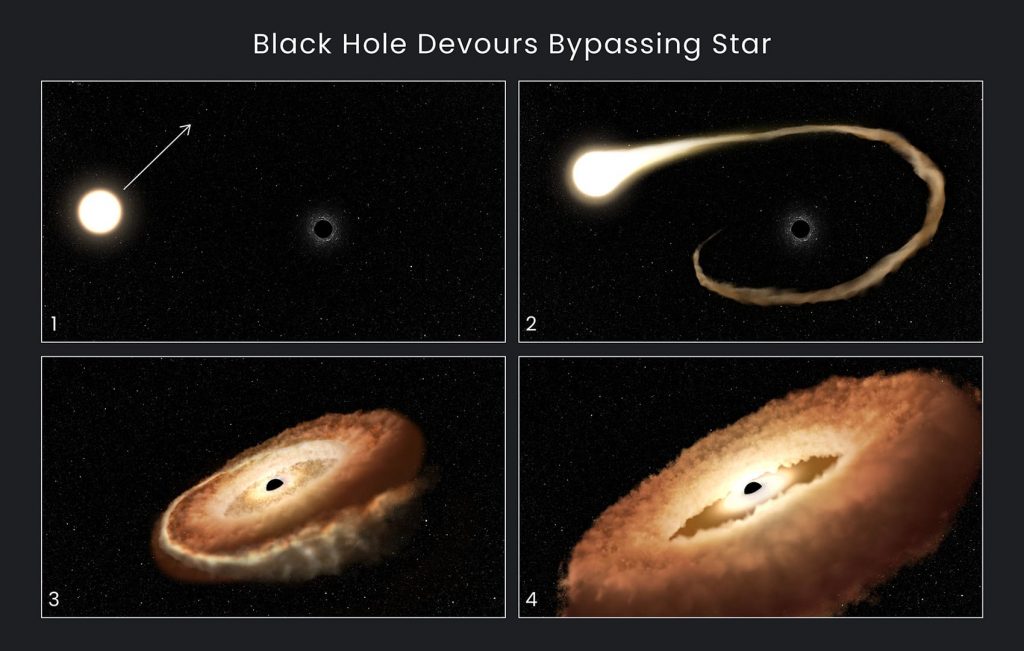The Hubble Space Telescope observed the tidal disruption event AT2022dsb. Telescope sensitivity to
The AT2022dsb tidal disruption event wasfirst recorded on March 1, 2022 during the Automated All-Sky Survey for Supernovae (ASAS-SN) study. In the process of weekly scanning the sky using a network of ground-based telescopes, astrophysicists recorded the beginning of the destruction of a star that came too close to the black hole.
A simulation of a tidal disruption event observed by Hubble. Video: NASA's Goddard Space Flight Center
This powerful collision was bright enough andclose to the earth. As a result, Hubble researchers have conducted ultraviolet spectroscopy of the tidal disruption event over a longer than usual period of time. At the same time, scientists were able to observe how the radiation changes over time.
Spectroscopic data collected by the telescopeshowed that the radiation comes from a very bright, hot, donut-shaped region of gas that was once a star. This region (torus), the size of the solar system, revolves around a black hole. The stellar wind escaping from the black hole moves at about 3% of the speed of light (32 million km/h).
 A tidal disruption event of a star. Image: NASA, ESA, Leah Hustak (STScI)
A tidal disruption event of a star. Image: NASA, ESA, Leah Hustak (STScI)
A star collides with a black holethe material is “spaghettified” and stretched along the event horizon. Although the black hole gradually sucks in what remains of the star, it is a “messy eater,” the study authors note. There is a balance between the black hole's gravity, which attracts stellar material, and the radiation, which ejects the material.
While astronomers using various telescopesзафиксировали около 100 событий приливного разрушения вокруг черных дыр. Большинство наблюдений выполнены на рентгеновских длинах волн. Они фиксируют свет от чрезвычайно горячей короны вокруг черной дыры, которая образовалась после того, как звезда уже была разорвана на части. Новые наблюдения процесса «поглощения» в ультрафиолете помогут лучше понять природу этих столкновений, считают ученые.
Read more:
The strongest class X flare occurred on the Sun
Nuclear fusion planet found
Humans still have fur genes, but they are temporarily turned off
On the cover: An artistic illustration of a tidal disruption event. Image: NASA, ESA, Leah Hustak (STScI)